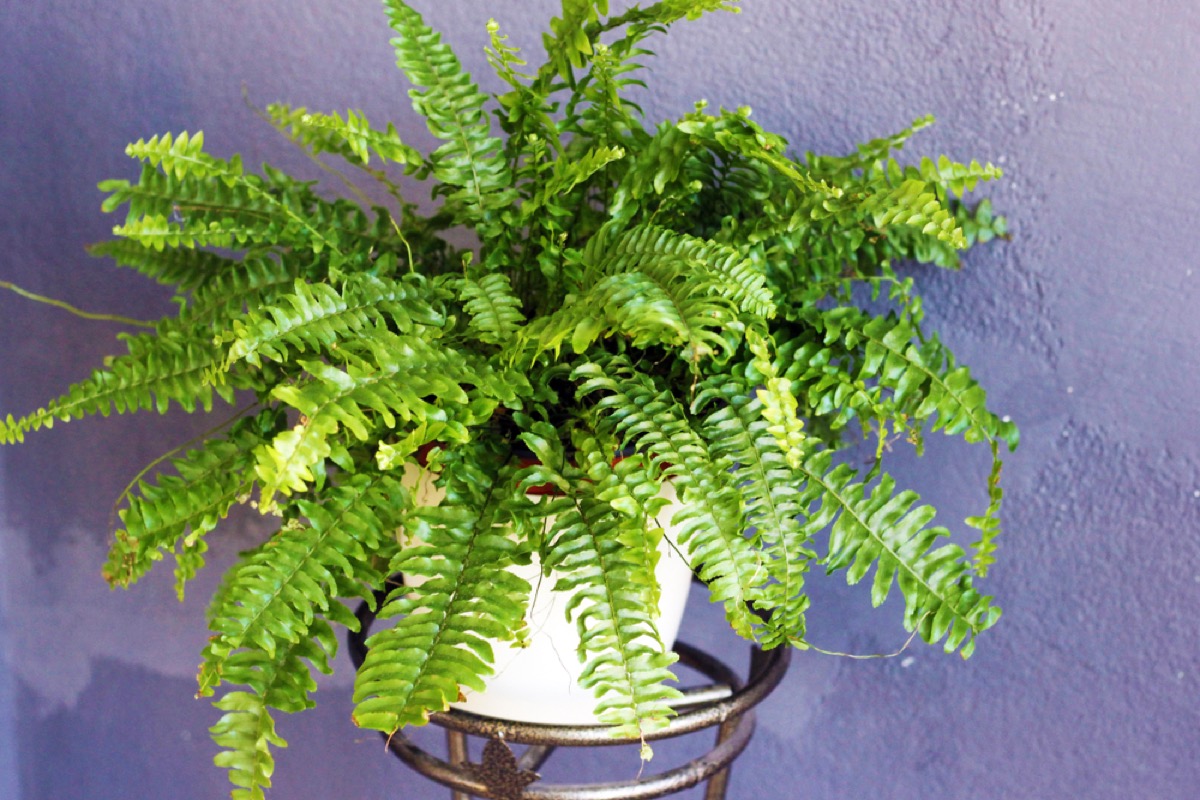Boston ferns are a popular houseplant choice for their lush, delicate fronds and ease of care. While these plants are relatively low-maintenance, they can occasionally experience issues such as leaf drop or yellowing fronds. These issues can be caused by a variety of factors, such as improper watering, inadequate lighting, or exposure to cold drafts. Understanding the specific care requirements of Boston ferns can help gardeners prevent these issues and keep their plant healthy and thriving. With proper care and attention, Boston ferns can add a touch of green to any indoor space and provide years of enjoyment.
Common Causes for Leaf Drop
Improper Watering
Boston ferns may drop leaves due to both underwatering and overwatering. Typically, a lack of water is the most likely reason for leaf drop. To prevent this, monitor the soil’s condition and water the plant thoroughly when the soil begins to dry out(source). Overwatering can also lead to ferns turning yellow and losing leaves, as it may cause root rot(source).
Insufficient Humidity
Boston ferns thrive in environments with high humidity levels. If the humidity in their surroundings is insufficient, they may experience leaf drop. To maintain adequate humidity, mist the fern regularly, or place a humidifier nearby.
Nutrient Deficiencies
Nutrient deficiencies, such as underfertilization, can lead to a Boston fern losing its leaves. Overfertilization can cause similar problems. It’s essential to strike a balance in providing nutrients to maintain the fern’s overall health(source).
Temperature Fluctuations
Temperature fluctuations and stress can harm Boston ferns, causing them to lose leaves. They are sensitive to temperature changes and prefer consistently warm environments. Avoid placing the fern near drafty areas or close to air conditioning and heating vents.
Pest Infestations
Boston ferns can be susceptible to pest infestations like spider mites and aphids. These pests can cause leaf drop as they feed on the fern’s foliage. Regularly inspect the plant for signs of infestation and treat it accordingly to prevent leaf loss(source).
How to Prevent Leaf Drop
Watering Techniques
Ensure proper watering by monitoring the soil condition and watering the plant thoroughly when it begins to dry out(source). However, avoid overwatering, as this can lead to leaf drop and root rot – instead, aim to keep the soil consistently moist without becoming waterlogged(source).
Humidity Measures
Boston ferns thrive in humid environments. To maintain optimal humidity, you can either place the plant on a pebble tray or use a humidifier(source). Regular misting also helps keep the humidity levels up, contributing to a healthy plant(source).
Fertilizer Tips
Use a balanced, water-soluble fertilizer during the growing season to ensure your Boston fern has the necessary nutrients. Be cautious not to over-fertilize, as this can lead to leaf burn and drop.
Temperature Control
Keep your fern in a room with a temperature between 65-75°F (18-24°C) and away from drafts or sudden temperature changes. Inadequate temperature control can stress the plant, causing leaves to drop.
Pest Management
Monitor your fern for common pests such as aphids or spider mites. Use insecticidal soap or an appropriate pesticide to treat infestations, which can lead to leaf drop if left unchecked.
Reviving a Shedding Fern
When a Boston fern starts shedding leaves, it’s important to identify and correct the underlying issues. One common cause for leaf drop is inadequate watering. To revive the fern, ensure the soil is kept consistently moist by touching it and watering thoroughly when it begins to dry out (The Practical Planter). However, avoid overwatering, as this can lead to root rot and eventual plant death (Smart Garden Guide).
Another crucial factor in reviving a shedding fern is humidity. Boston ferns thrive in humid environments, so it may be helpful to increase humidity levels around the plant. A simple method to achieve this is by placing the fern on a tray filled with water and pebbles, ensuring the water doesn’t touch the bottom of the pot. Additionally, regularly misting the fern with water helps maintain optimal humidity.
Don’t forget to check for pests, as they can cause leaf drop in Boston ferns. Proper lighting and correct fertilization are also essential in maintaining the health of the fern. Be sure to place the fern in a spot with indirect, bright light, and avoid overfertilizing it (Smart Garden Guide). By addressing these potential issues, you can help your Boston fern recover and regain its lush, vibrant appearance.
Helpful Video

My name is Daniel Elrod, and I have been houseplant love ever since I was 17. I love how much joy they bring to any room in the home. I’ve always been amazed at how a few pots of flowing leaves can turn a drab and sterile office into an inviting place where people love to work at.































